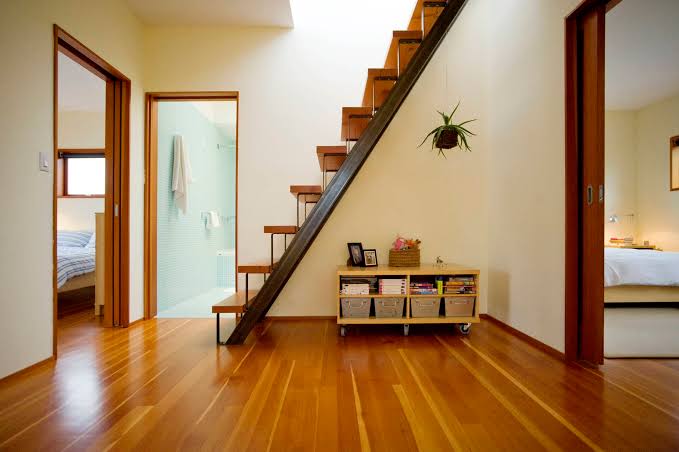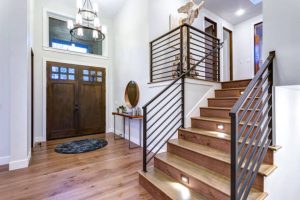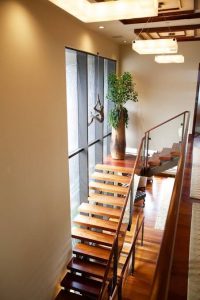
Steep Staircases: Design, Challenges, and Solutions
Steep Staircases: Design, Challenges, and Solutions
Steep staircases, while often an architectural necessity in space-constrained environments, present unique design challenges and potential hazards. Whether you’re renovating an older home or designing a new building with limited space, understanding the intricacies of steep staircases is crucial for creating safe and functional designs.
The Appeal of Steep Staircases
Steep staircases are often chosen for their space-saving benefits and aesthetic appeal. They can add a dramatic flair to a home or building, creating a striking visual element. In historic buildings, steep staircases are often a hallmark of the architectural style, adding to the property’s charm and authenticity.

Design Considerations
1. Space Optimization:
– Compact Design: Steep staircases maximize vertical space, making them ideal for small homes, lofts, or tight corners.
– Alternative Configurations: Spiral, helical, and ladder-style staircases are popular steep designs that save space while providing functional access.
2. Material Selection:
– Durability: Choose materials that are strong and durable, such as hardwood, steel, or reinforced concrete, to ensure the staircase can withstand regular use.
– Aesthetics: Materials like glass, metal, or custom wood finishes can enhance the visual appeal of the staircase.
3. Safety Features:
– Handrails: Ensure that sturdy handrails are installed on both sides of the staircase to provide support and stability.
– Non-Slip Surfaces: Use non-slip treads or coatings to prevent accidents, especially in homes with children or elderly residents.
– Proper Lighting: Adequate lighting is essential to prevent trips and falls. Consider LED strips under each step or wall-mounted lights along the staircase.
Challenges of Steep Staircases
1. Accessibility:
– Mobility Issues: Steep staircases can be difficult to navigate for people with mobility impairments, making them unsuitable for universally accessible design.
– Carrying Items: Transporting items up and down steep stairs can be challenging and hazardous.
2. Building Codes and Regulations:
– Compliance: Many building codes have specific requirements for staircase steepness, tread depth, and riser height. Ensuring compliance can limit design flexibility.
– Permits: Obtaining the necessary permits and approvals can be more complicated for unconventional staircase designs.
3. Safety Concerns:
– Fall Risk: The risk of falling is higher with steep staircases. Ensuring robust safety measures is paramount.
– Emergency Egress: In an emergency, steep staircases can hinder quick evacuation, especially for larger groups or individuals with disabilities.
Solutions and Innovations
1. Hybrid Designs:
– Alternating Tread Stairs: These stairs have staggered treads that allow for a steeper incline while providing a larger surface area for each foot.
– Compact Spirals: Spiral staircases can be designed with a smaller footprint while maintaining a more manageable incline.

2. Mechanical Assistance:
– Stair Lifts: Installing a stair lift can make steep staircases accessible to those with mobility issues without altering the staircase’s design.
– Handrails and Grab Bars: Additional handrails and strategically placed grab bars can provide extra support.
3. Enhanced Safety Features:
– Edge Lighting: LED lights along the edges of each step can improve visibility.
– Contrasting Treads: Using contrasting colors or materials for the treads and risers can help distinguish each step clearly.
Case Studies
1. Historic Homes:
– In many historic homes, steep staircases are preserved for their historical value. Careful renovation can include modern safety features while maintaining the original design.
2. Urban Lofts:
– Urban lofts often utilize steep staircases to maximize floor space. Innovative designs, such as floating treads or space-saving spirals, can add a contemporary touch.
Steep staircases offer a blend of functionality and aesthetic appeal, making them a popular choice in many architectural designs. While they present certain challenges, thoughtful design and innovative solutions can mitigate risks and enhance usability. By prioritizing safety, compliance, and accessibility, steep staircases can be a beautiful and practical addition to any space, balancing the need for efficient use of space with the demands of modern living.
